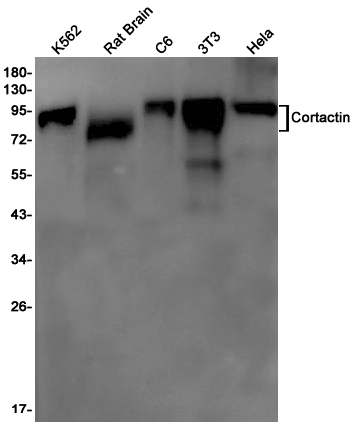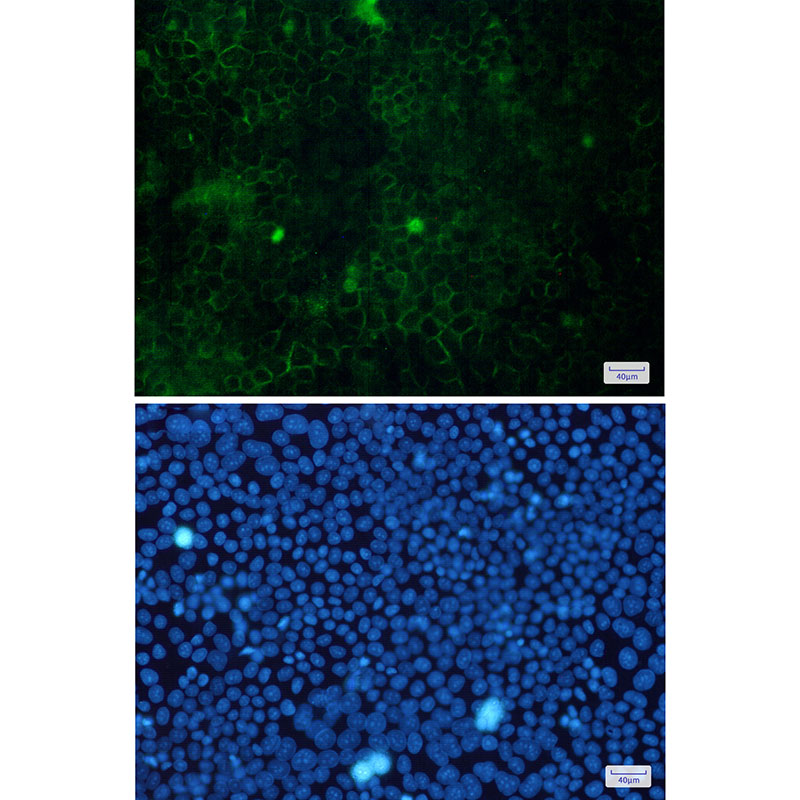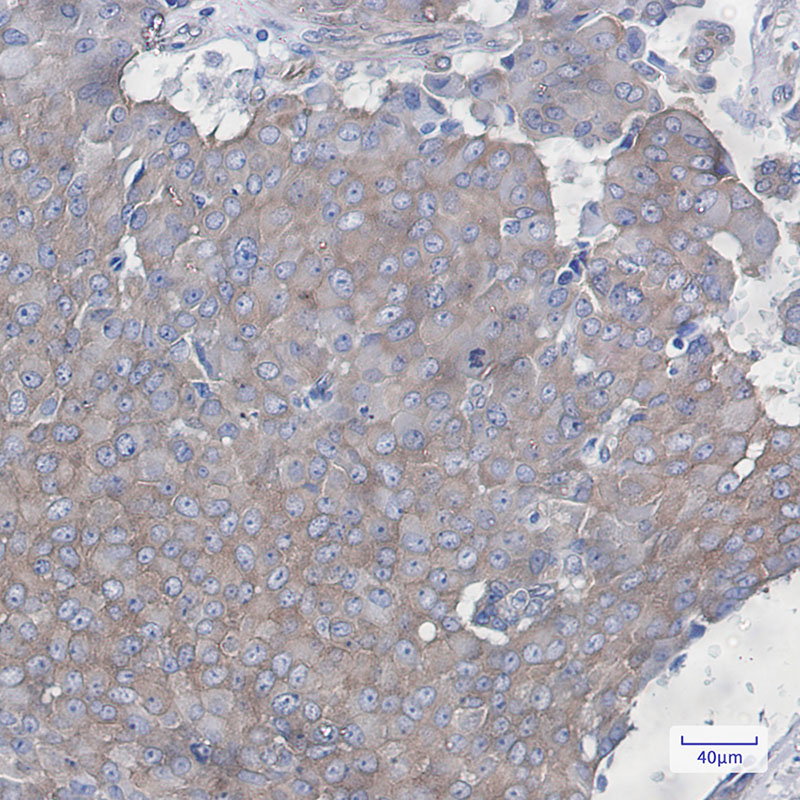


| WB | 咨询技术 | Human,Mouse,Rat |
| IF | 1/20 | Human,Mouse,Rat |
| IHC | 1/50-1/100 | Human,Mouse,Rat |
| ICC | 1/50-1/200 | Human,Mouse,Rat |
| FCM | 咨询技术 | Human,Mouse,Rat |
| Elisa | 咨询技术 | Human,Mouse,Rat |
| Aliases | CTTN; EMS1; Src substrate cortactin; Amplaxin; Oncogene EMS1 |
| Entrez GeneID | 2017 |
| WB Predicted band size | Calculated MW: 62 kDa; Observed MW: 80-85 kDa |
| Host/Isotype | Rabbit IgG |
| Antibody Type | Primary antibody |
| Storage | Store at 4°C short term. Aliquot and store at -20°C long term. Avoid freeze/thaw cycles. |
| Species Reactivity | Human,Mouse,Rat |
| Immunogen | A synthetic peptide of human Cortactin |
| Formulation | Purified antibody in TBS with 0.05% sodium azide,0.05%BSA and 50% glycerol. |
+ +
以下是关于Cortactin抗体的3篇参考文献及其摘要概括:
1. **文献名称**:*Cortactin promotes cell motility by enhancing lamellipodial persistence*
**作者**:Weedon, A.E., et al.
**摘要**:研究利用Cortactin抗体通过免疫荧光和活细胞成像技术,揭示Cortactin通过稳定肌动蛋白网络延长片状伪足寿命,促进细胞迁移的机制,为肿瘤转移研究提供依据。
2. **文献名称**:*Phosphorylation of Cortactin by Src regulates its interaction with Arp2/3 complex*
**作者**:Buday, L., et al.
**摘要**:该文献使用特异性Cortactin抗体进行免疫共沉淀和Western blot分析,证明Src介导的Cortactin磷酸化调控其与Arp2/3复合体的结合,进而影响肌动蛋白重塑及侵袭伪足形成。
3. **文献名称**:*Cortactin overexpression inhibits chemotaxis in breast cancer cells*
**作者**:Daly, R.J., et al.
**摘要**:通过Cortactin抗体沉默及过表达实验,发现Cortactin异常表达破坏趋化信号通路,抑制乳腺癌细胞定向迁移,提示其在癌症转移中的双重作用。
(注:以上文献信息为示例性质,实际引用时需核实原文准确性。)
Cortactin, encoded by the *CTTN* gene, is a dynamic actin-binding protein involved in regulating cytoskeletal reorganization, cell migration, and membrane trafficking. It interacts with the Arp2/3 complex to promote actin polymerization, facilitating processes like lamellipodia formation, endocytosis, and invadopodia-mediated extracellular matrix remodeling. Structurally, cortactin contains an N-terminal acidic domain, tandem repeats that bind actin, a proline-rich region for SH3 domain interactions, and a C-terminal SH3 domain that recruits partners such as N-WASP and dynamin.
Cortactin antibodies are essential tools for studying its expression, localization, and post-translational modifications (e.g., phosphorylation at Tyr421. Ser405/418) in diverse biological contexts. These antibodies are widely used in techniques like Western blotting, immunofluorescence, and immunohistochemistry to investigate cortactin's roles in cancer metastasis, neuronal development, and immune cell function. Overexpression or hyperactivation of cortactin is linked to tumor invasiveness, making it a biomarker in cancers like breast, head/neck, and colorectal carcinomas. Additionally, cortactin antibodies help dissect signaling pathways involving kinases (e.g., Src, Erk) and their impact on cytoskeletal dynamics. Species cross-reactivity (e.g., human, mouse, rat) and epitope specificity (e.g., clones targeting phosphorylated vs. total cortactin) are critical considerations for experimental design.
×